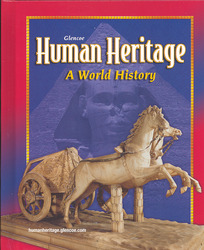Human Heritage: A World HistoryChapter 15:
The Roman EmpireWeb Activity Lesson Plans“Life in Roman Times”Introduction
Students learned in this chapter that during the reign of Augustus Rome entered a period of peace called the Pax Romana. Rome and its people generally prospered during this 200-year period, as civilization spread, trade increased, and cultures mixed. In this activity students will take a closer look at the social order and daily life in Roman times. Lesson Description
Students will navigate the PBS Web site feature on the Roman Empire in the First Century to learn more about the lives of ancient Romans. Students will link to information about the social order in the Roman Empire as well as descriptions of Roman marriage customs, religious practices, and forms of entertainment. Students will then answer four questions and apply this information by writing three journal entries from the point of view of an inhabitant of the Roman Empire. Instruction Objectives
- Students will be able to classify the social order of the Roman Empire.
- Students will be able to apply details from the Web site to write realistic journal entries.
Student Web Activity Answers
- Yes; although the boundaries between the classes were legally enforced, people could move up the social ladder by improving their financial circumstances.
- The Plebeians had the greatest numbers in Rome, so it was to the Emperor's benefit to keep them happy. He could do this by regulating food prices to keep the poor fed ("bread") and by offering free public entertainment ("circuses").
- Marriage in Roman times was a personal agreement between families. Parents chose the spouses for their sons and daughters, often with the goal of using the marriage to improve their family's financial position or class.
- Lares were protective spirits believed to inhabit every Roman household. A shrine to the family's lar was often found in the atrium of the house, where the paterfamilias would honor the lar on certain days each month. A portion of each meal was thrown into the fire as an offering to the lar, and its blessings were invoked before any special family event.
- Students' journal entries may vary.
 | 




